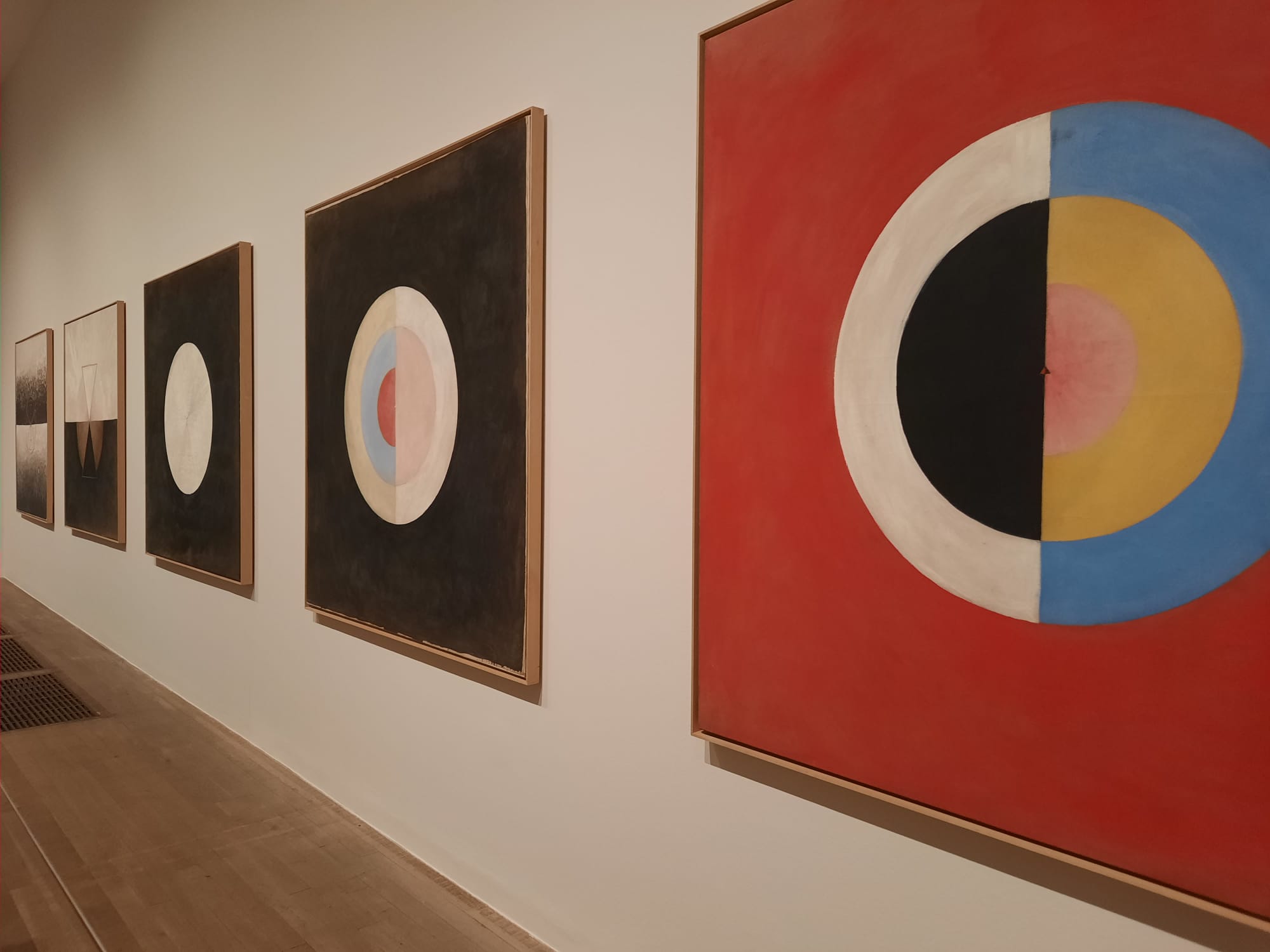Hilma Af Klint & Piet Mondrian: Forms Of Life – Tate Modern, London
A compare and contrast exercise, Hilma af Klint & Piet Mondrian: Forms of Life encourages reflection on the organic origins of abstract art.

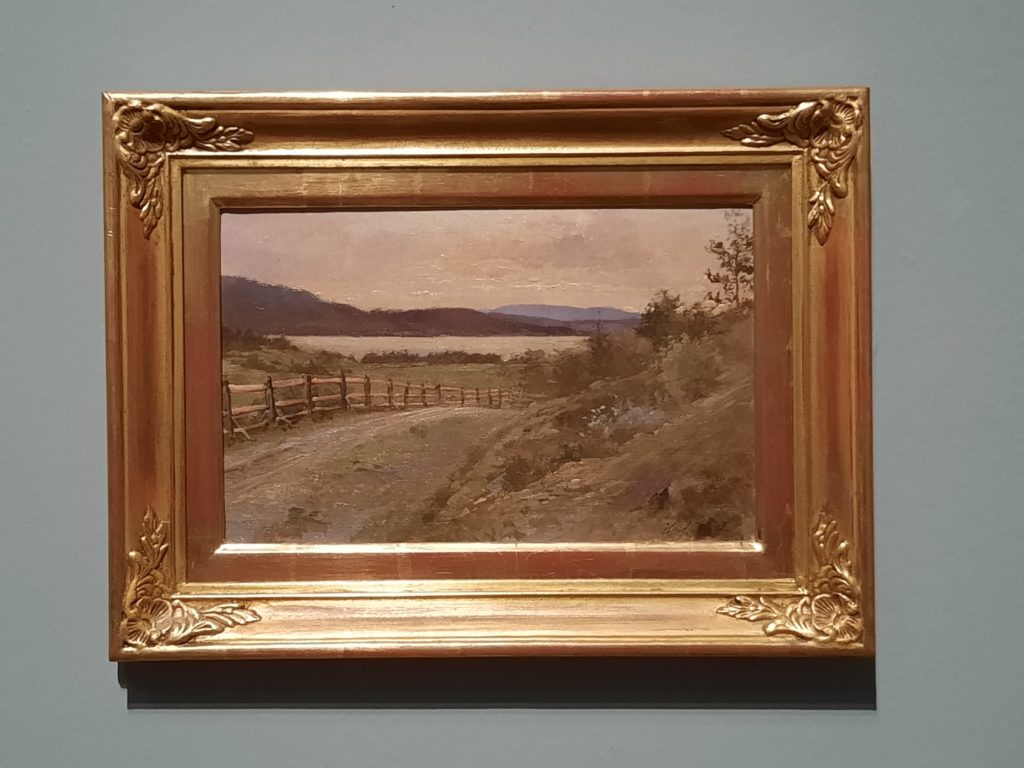




Hilma Af Klint & Piet Mondrian: Forms Of Life
It seems a strange pairing, to begin with. Two early 20th Century European painters, sure, but a more different set of two artists you would be hard pressed to find. Hilma af Klint on the one hand: Swedish, deeply spiritual, star on the rise in recent years. Then there’s Piet Mondrian: Dutch, big name in the art world, instantly recognisable style.
This exhibition of course sets out to illustrate why such disparate artists may have more in common than we may think. They do this by diving into the artists’ spiritual belief systems and interest in new ways of seeing the world. They posit that, rather than being divorced from the natural world, the abstraction of both artists’ work is a reaction to new ways of understanding and categorising it.
Like a recent review of mine also at the Tate, I remain a little unconvinced about the exhibition’s central premise. I do think it’s a very interesting proposition, however, and provided new insights for me into Mondrian’s work in particular. So let us take a look around the exhibition and consider each artist, their similarities and differences in more detail. I will try not to be swayed by the fact that I visited on a busy Saturday afternoon if you will kindly overlook the sheer numbers of people in some of the images.

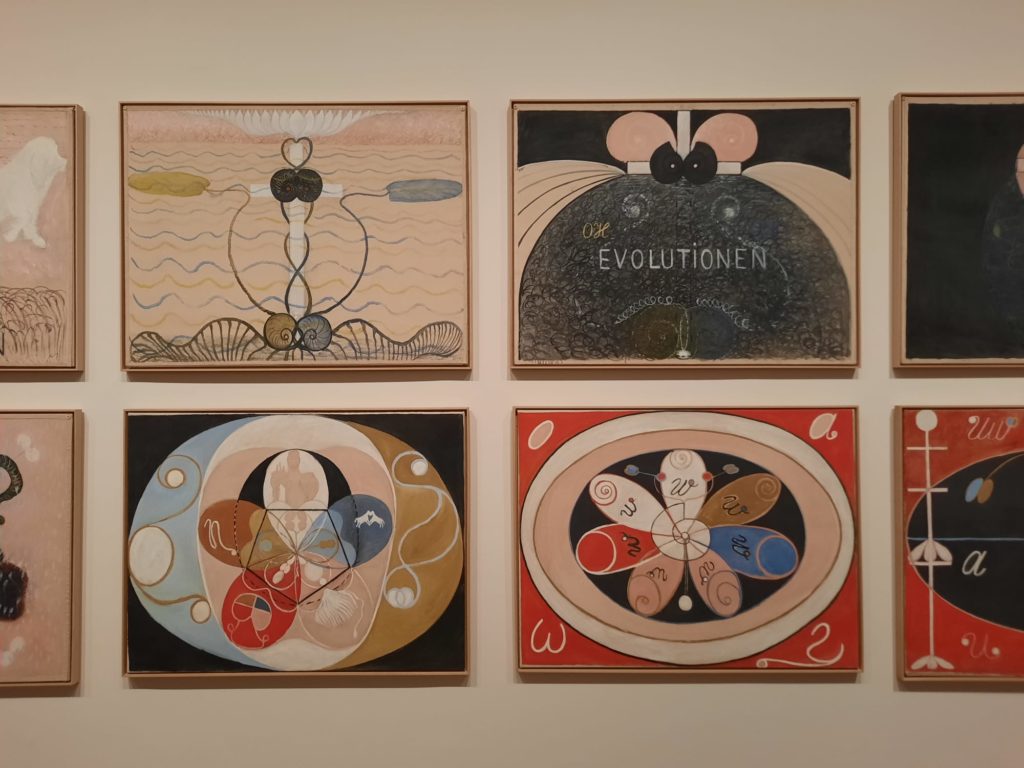
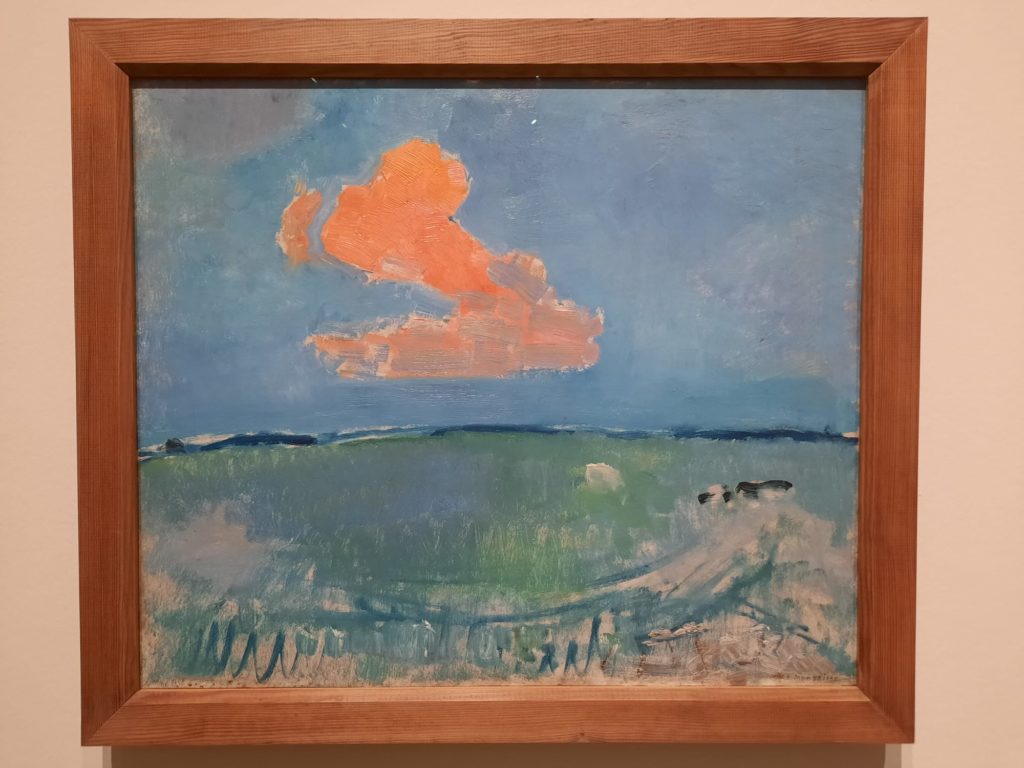
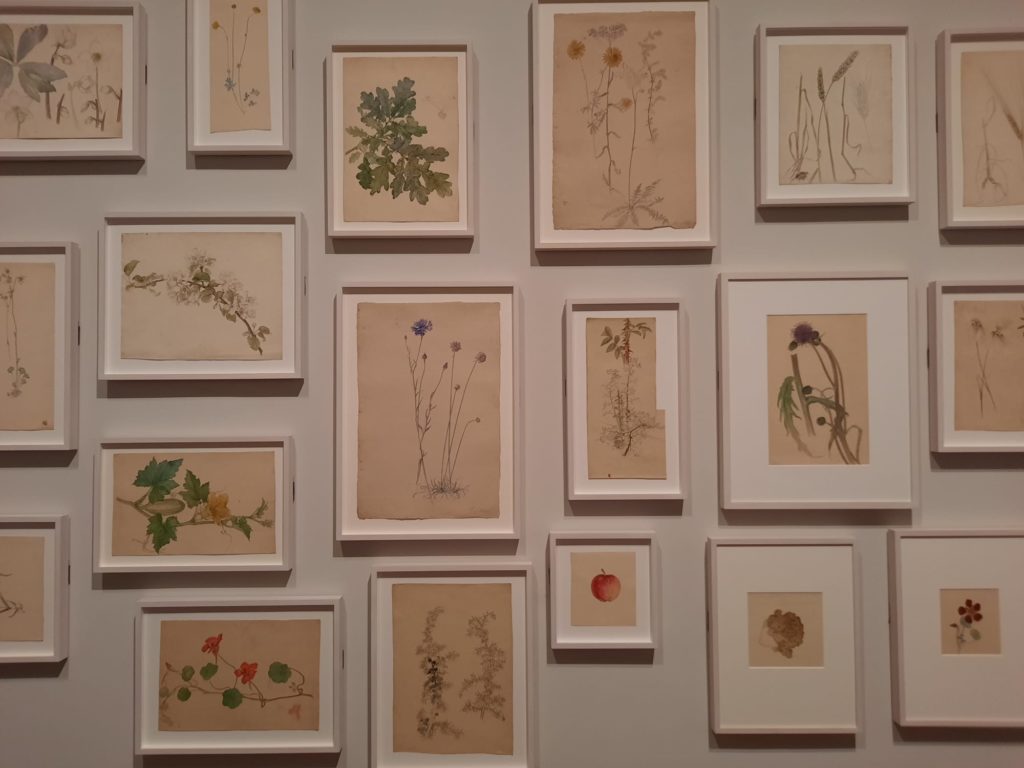
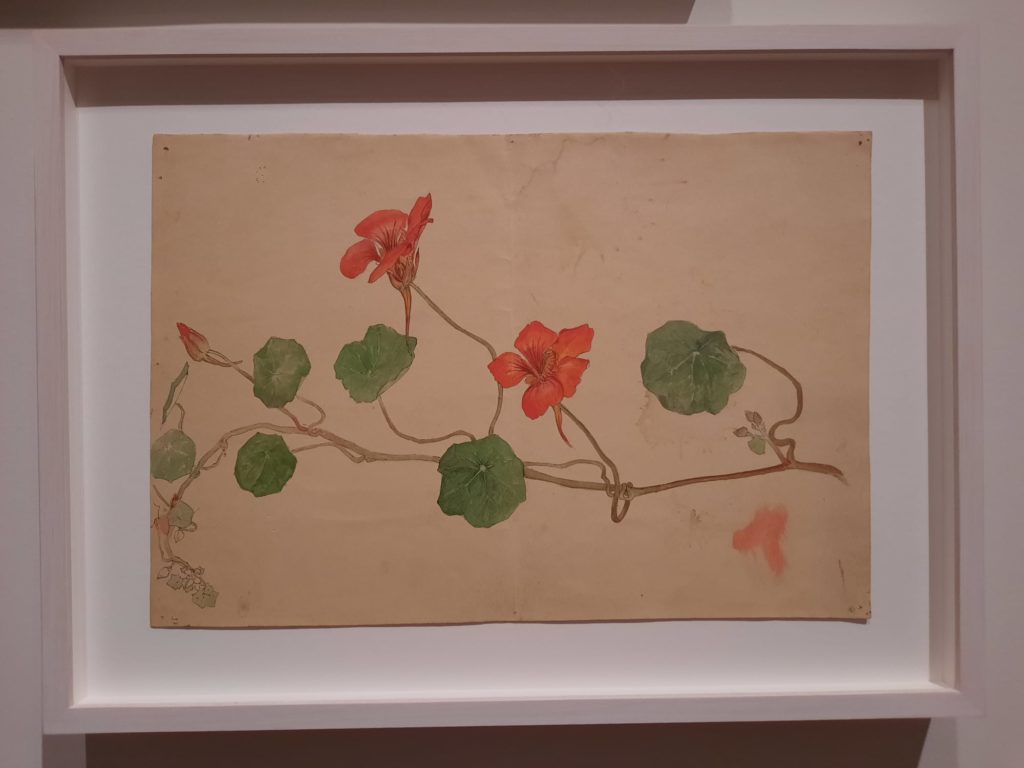
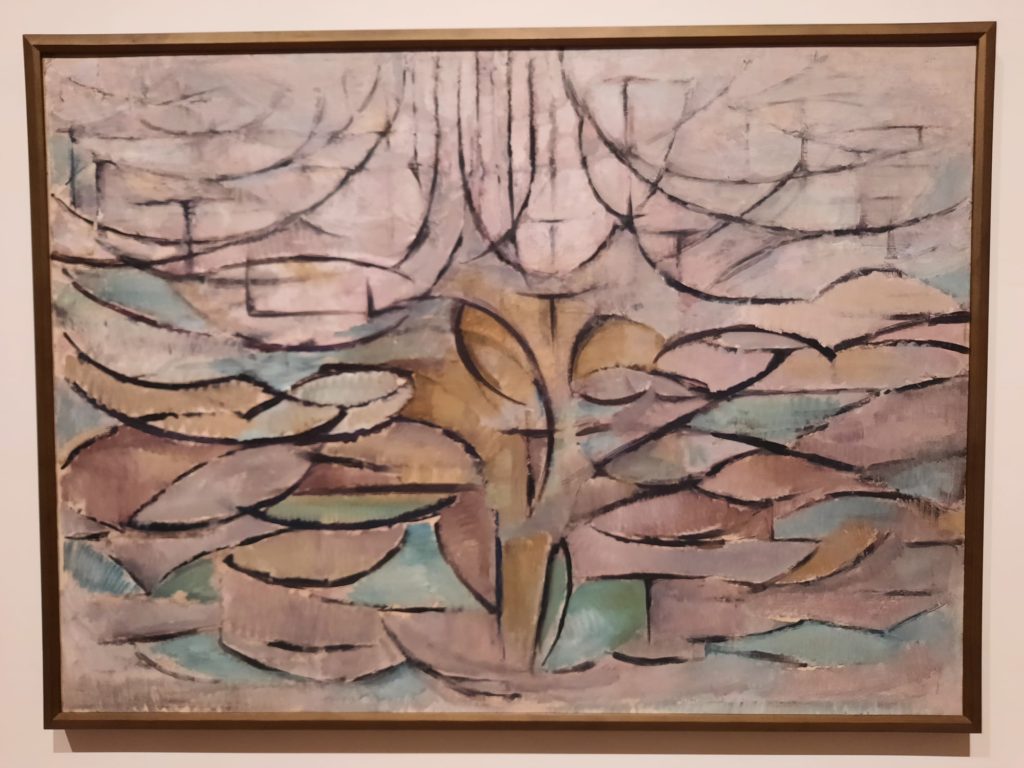
Beginnings
It’s easy to make a claim for similarities between af Klint and Mondrian at the outset of the exhibition: their works are barely distinguishable. Born ten years apart (af Klint in 1862 and Mondrian in 1872), both trained first as classical landscape painters. Mondrian was part of the Hague School, rather sombre and influenced by the Barbizon School. Yet the qualities of the Northern European light and resulting soft colour palette are really rather similar to that of his older, Swedish, almost-contemporary.
We can also track the thread of the exhibition as the artists begin to experiment. Landscapes break down into constituent colours, flat planes of echoing the Post-Impressionists. In what must be a wonderful moment for any curator, the Tate’s Frances Morris and curatorial team next reunites works by both artists entitled Evolution. What better way to reinforce the point about parallel development tracks and interest in the natural world? A posthumous gift from both artists, surely. Granted, they are not either artist’s best work, but they do mark a clear departure from those traditional early works to something more personal. Mondrian’s Evolution is unlike any of his later work: blue-skinned sci-fi women, their nipples indicating the extent of their enlightenment. Af Klint’s series on evolution is much more aligned to her later work: complex, annotated spiritual diagrams.
Contrasting handling of similar subjects is again the topic of the next room. This time it’s botanical studies. Natural studies could provide a steady income for female artists excluded from other opportunities, and so it was with af Klint who maintained a steady stream of these and landscapes for public consumption while keeping her spiritual paintings private. Her botanical studies are carefully observed and of mostly local flora. Mondrian’s are clearly working through ideas of colour and form, his plants far less naturalistic and more modern for it.
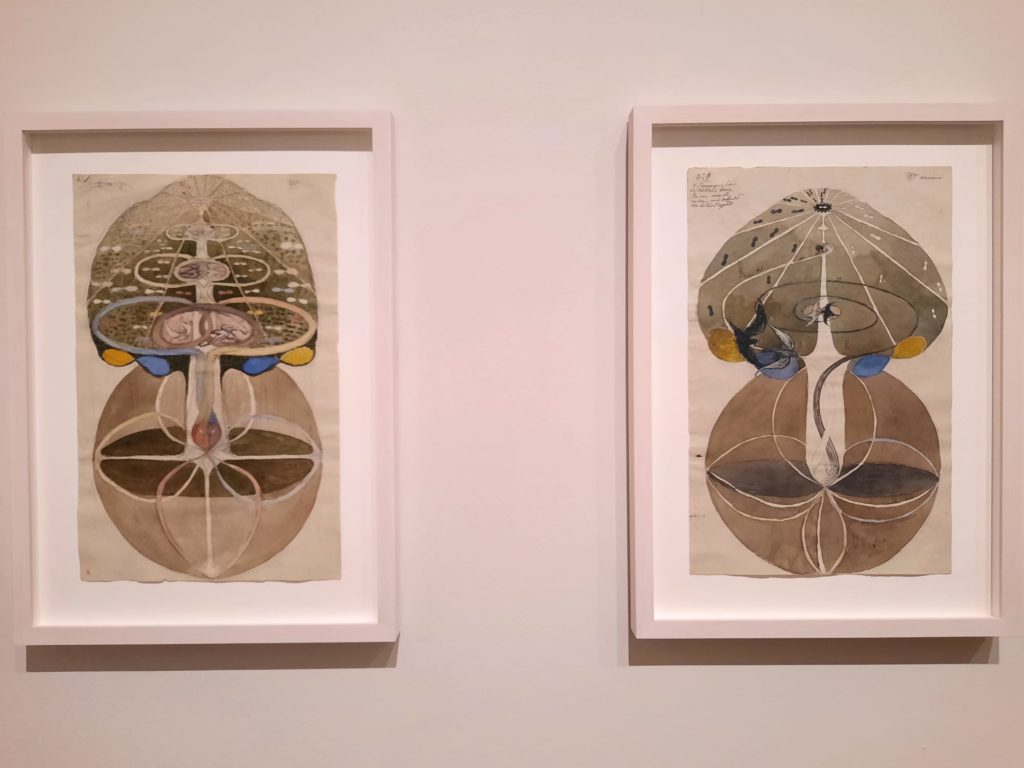


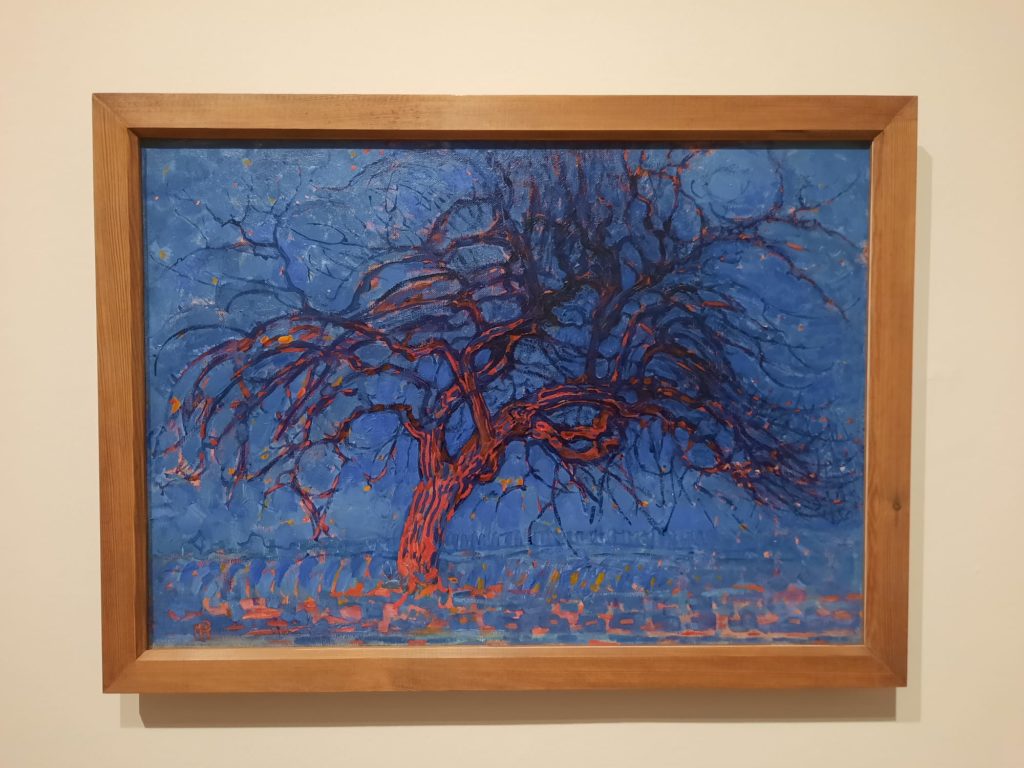

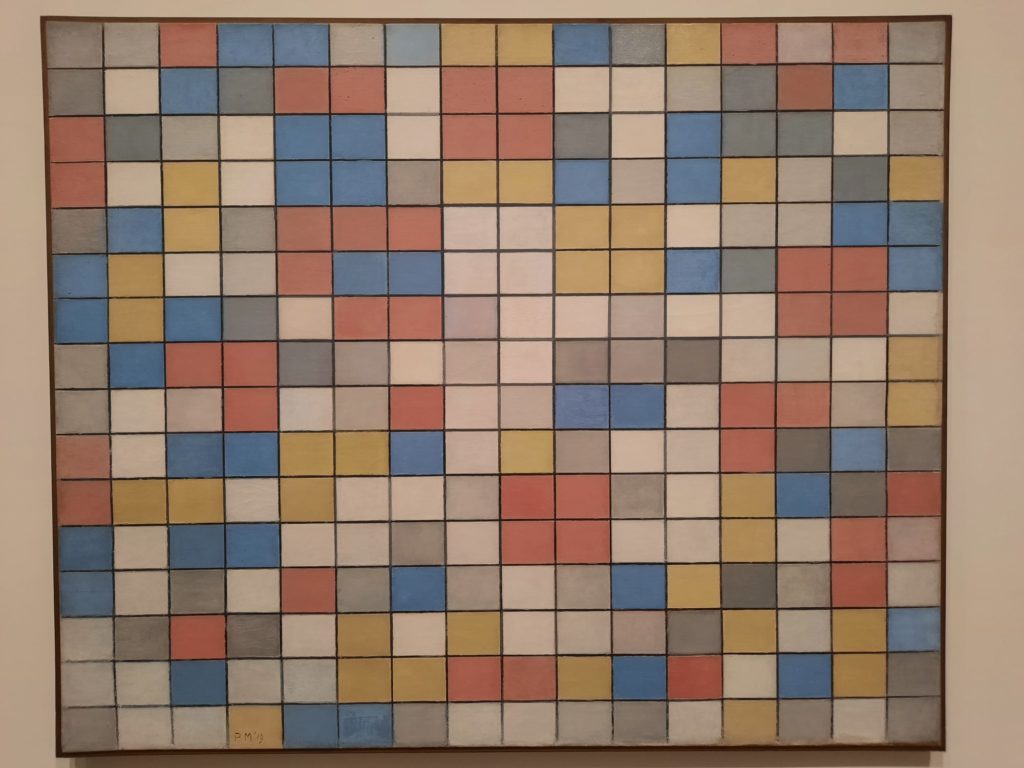
Theosophy And Spiritualism
Before our artists diverge too far, let us take a little look at the impact of Theosophy and spiritualism on each of them. Theosophy, for those who are unfamiliar with it, is actually one of two things. Either it is an occult movement emerging in the late 19th Century from the writings of the Russian Helen Blavatsky. Or it is Christian Theosophy, still quite mystic but with a focus on obtaining direct knowledge of divinity. If we try not to get too bogged down in details, Theosophy is about a divine absolute, a quest for mystical knowledge, and shared connection.
I knew very well that af Klint had an interest in spirituality which was at the heart of her work. I first came across her in an exhibition on just this topic. In 2022 I made a trip to Swedenborg House in Bloomsbury to try out a virtual reality experience reimagining af Klint’s works in the context for which she originally painted them: The Temple. Throughout her life, af Klint created artworks that attempted to explain and document complex spiritual theories. It was her belief that she was guided in this by an angelic figure, Amaliel. For af Klint, Theosophy and spiritualism was not just an influence, it was her purpose.
Mondrian’s interest in Theosophy was a bit more of a surprise to me. On a personal level, his belief in Theosophy is very well documented. Wherever he moved in the world, he joined the local Theosophical Society, and his reading list reflected his Theosophical interests. On an artistic level, the connection is a lot harder to prove. His Symbolist period (the blue ladies from earlier) are Theosophy all over. But his abstract period? Less clear.
Theosophy is undoubtedly a connection between Hilma af Klint and Piet Mondrian, therefore. It’s whether the connection is strong enough to hang an exhibition off that remains to be seen.
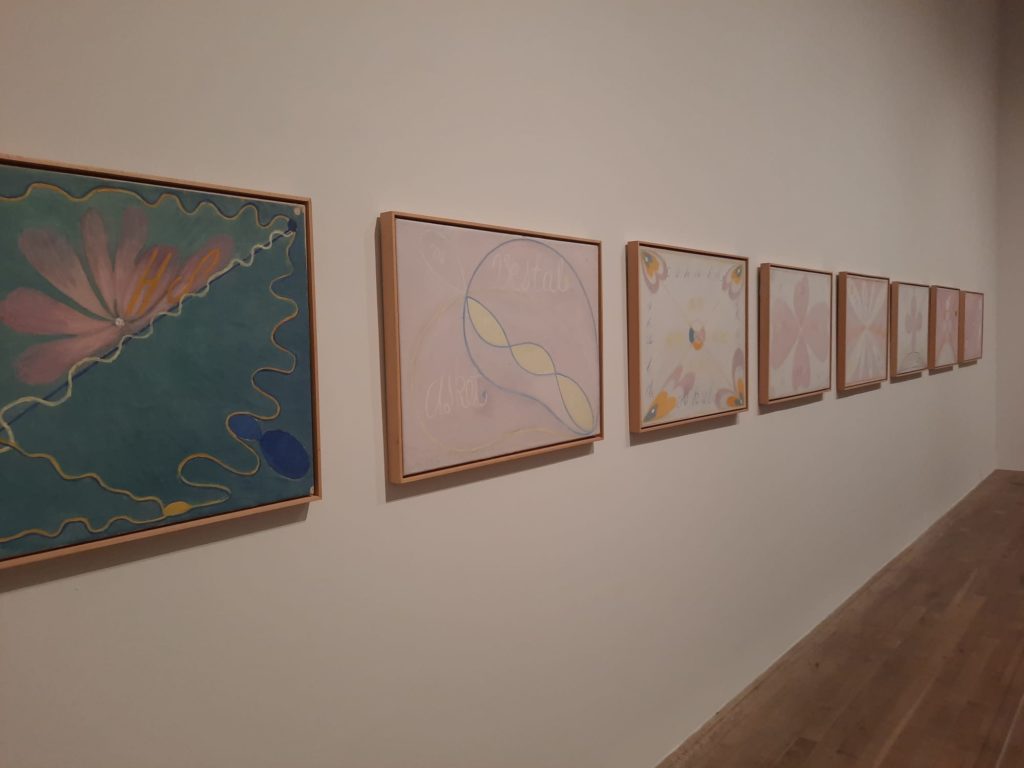



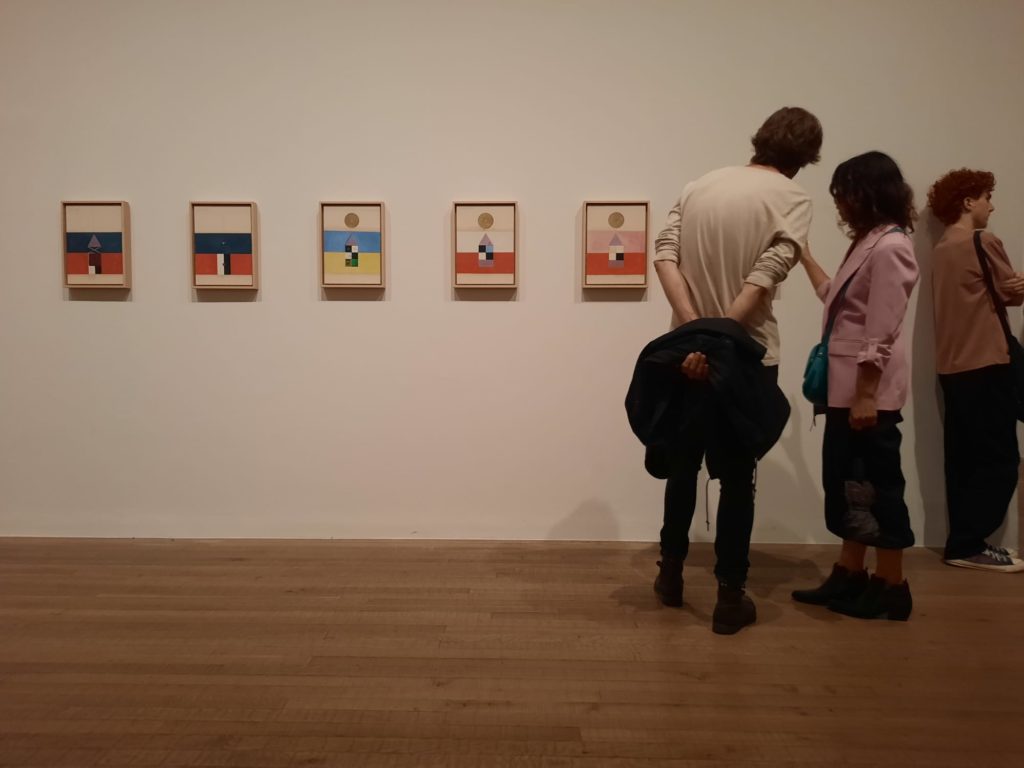
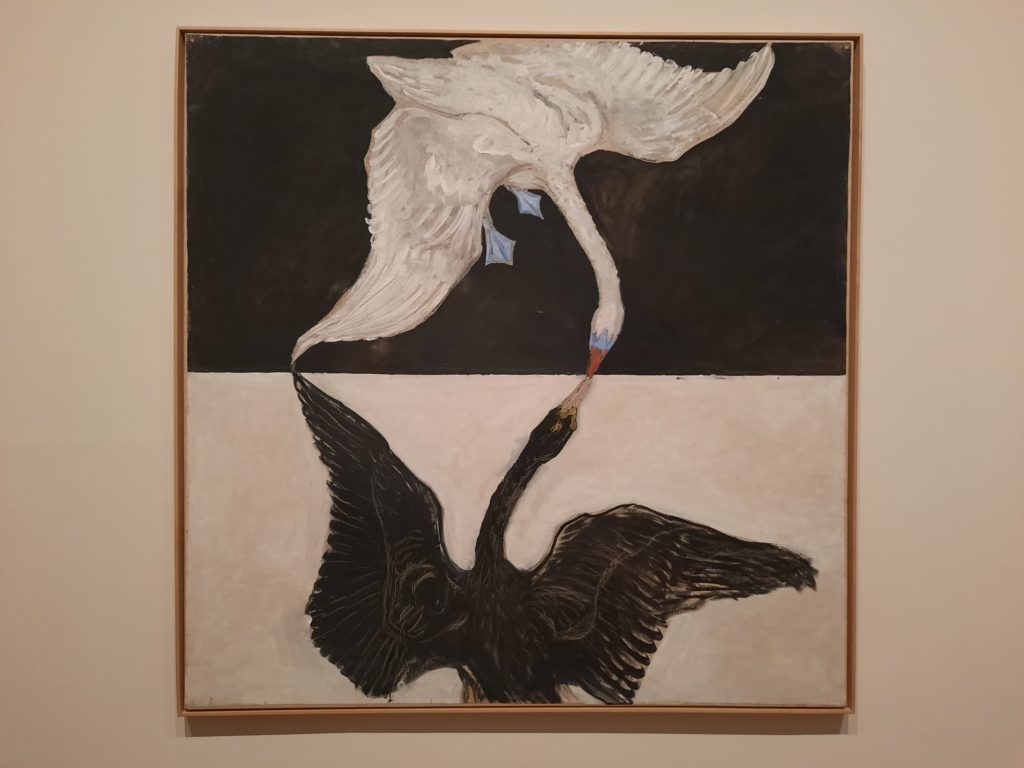
Artistic Styles Solidify
As we move into the following rooms, works by Hilma af Klint and Piet Mondrian are rarely hung side by side. Sometimes they coexist in a room, occupying separate walls. Sometimes they have a space to themselves. Generally there is something that unifies them, a pastel colour palette, for instance. Or bold geometric forms. But each artist’s style solidifies into its mature form as we progress through the exhibition.
For af Klint, this means series after series of images carefully documenting her unseen world. Motifs reappear: snails and spirals, flowers and loops. Many have text annotations to help illuminate their meanings. A series of diagrammatic paintings of world religions is an interesting case study. Theosophists tend to believe in teachings from Eastern and Western religions, and here af Klint attempts to represent different faiths by reducing them to simple forms in black and white. The concept itself is curious, but it certainly illustrates the artist’s belief in being able to capture complex concepts in simple, reductive images.
In the case of Mondrian, as his style solidifies it becomes more familiar to us. Intersecting perpendicular lines and strong primary colours. There are a couple of interesting works to see: a set design for an experimental play, for instance. But even this is recognisably Mondrian. The uniformity of his works, and their modest scale in comparison to af Klint’s increasingly large canvases, leaves them a little swamped in the latter half of the exhibition.
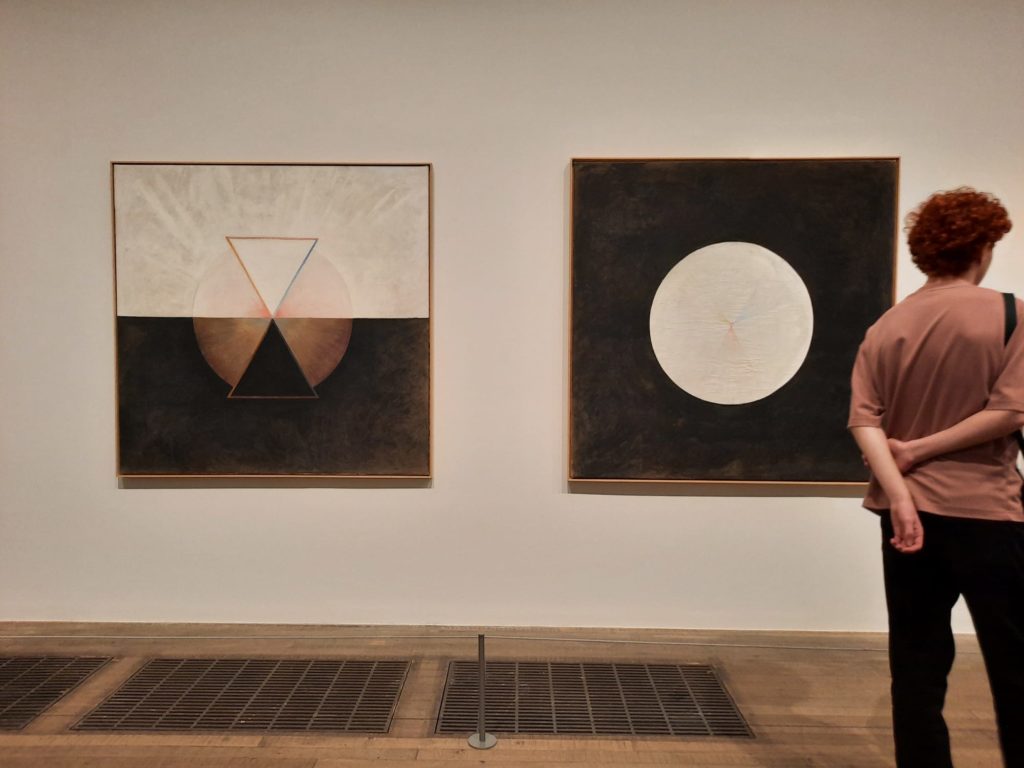
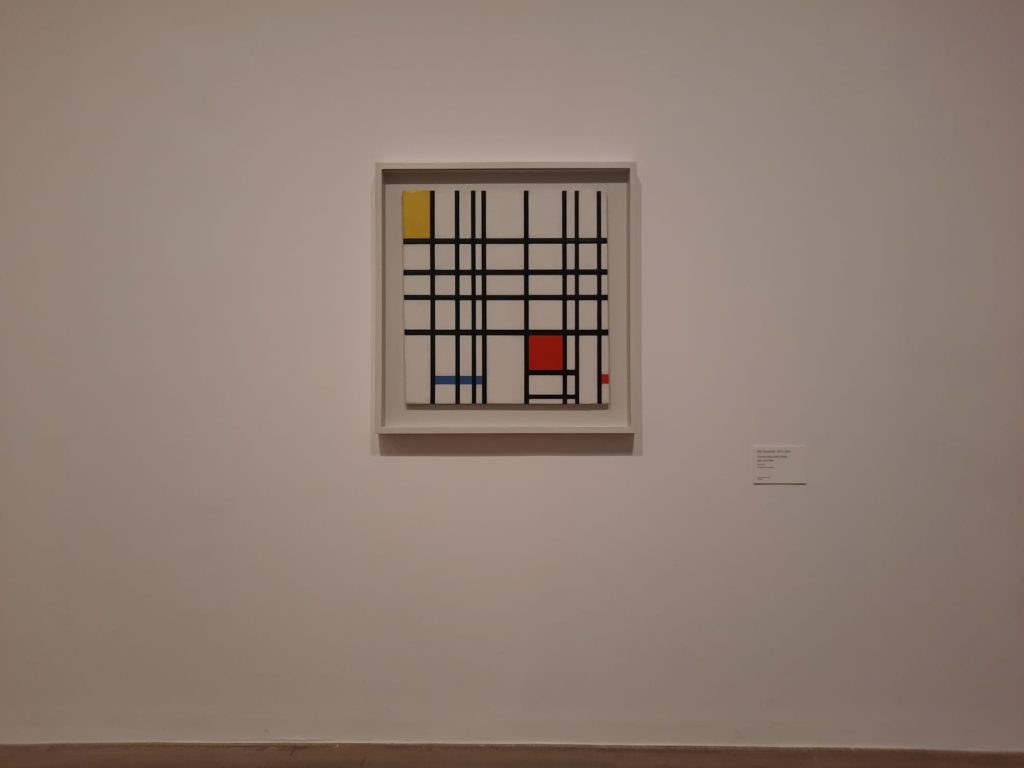

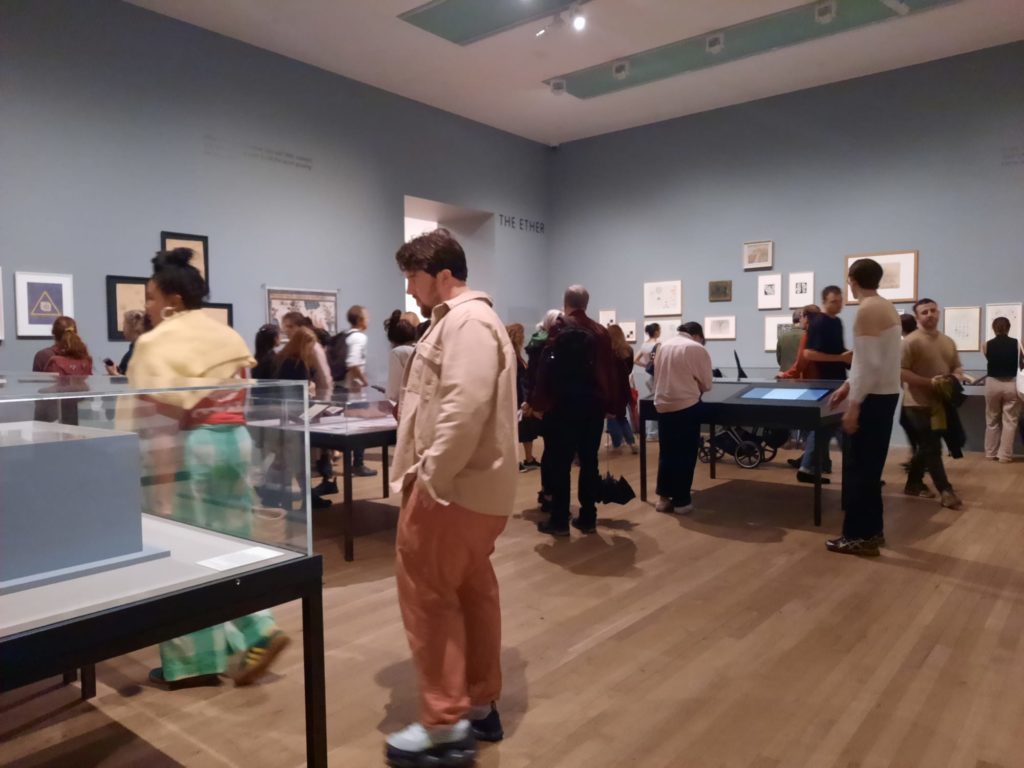

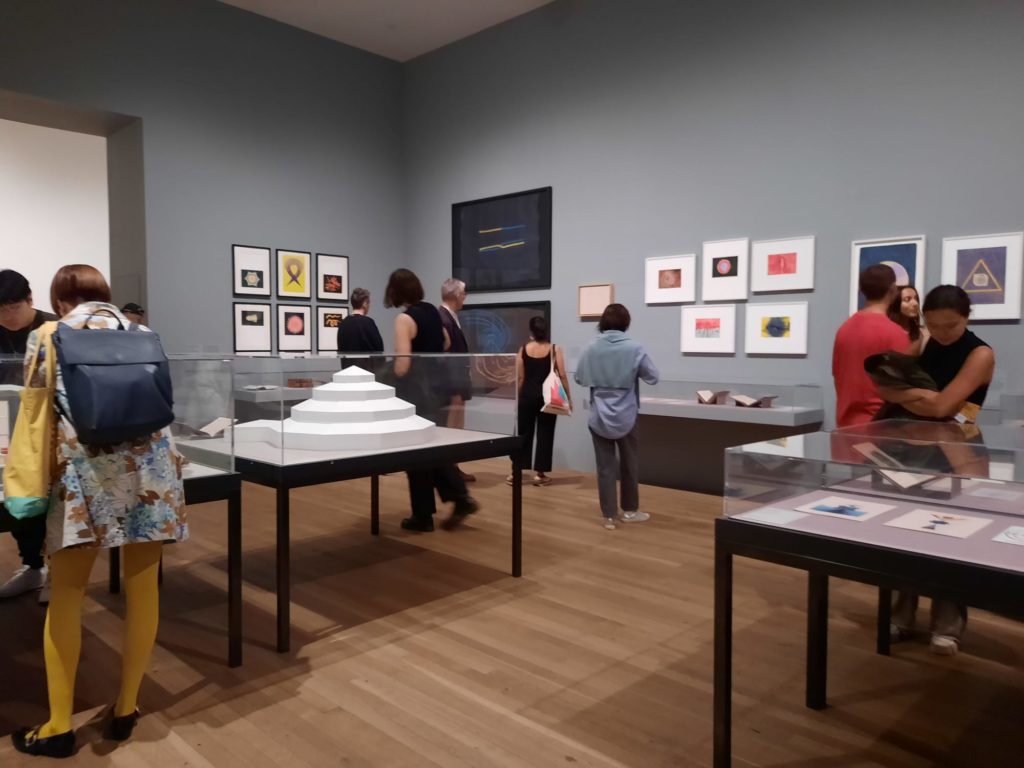
Abstraction And Intent
So we are most of the way through the exhibition now. We’ve seen our two artists follow similar paths from landscape to idiosyncratic style. We’ve learned that they both had a strong interest in Theosophy. Af Klint’s swooping curves are now becoming as familiar to us as Mondrian’s severe lines. But is the Tate’s argument about further connection between the two, and in particular that “each artist was creating an abstract language that could express art’s interconnectivity with all forms of life”, proven?
In the case of Mondrian, perhaps. Through the exhibition, you can see him move from realistic representation to experimentation with essential forms. I can see the argument that his art does not reject the organic, it seeks new ways to represent and order it.
In the case of af Klint, less so. For me it comes down to intent. I don’t believe af Klint was creating an abstract language to express art’s anything. Her work is inextricable from her belief: she was not experimenting in a cerebral way in order to push the boundaries of art. She was experimenting in order to find ways to capture the invisible more accurately. Her canvases are purely devotional, intended for The Temple and for more enlightened times. The short VR experience I had at Swedenborg House actually captured this far better than this extensive exhibition. Some of the same works featured in both, but in the VR version the sense of committing to paper or canvas hidden worlds of movement and meaning was far more palpable.
This difference between the artists is a key one. Perhaps Mondrian was more influenced by his beliefs than we can know today. But ultimately I found the comparison and the thesis an interesting lens through which to consider these two artists, while ultimately setting it aside in favour of celebrating their differences rather than their similarities.



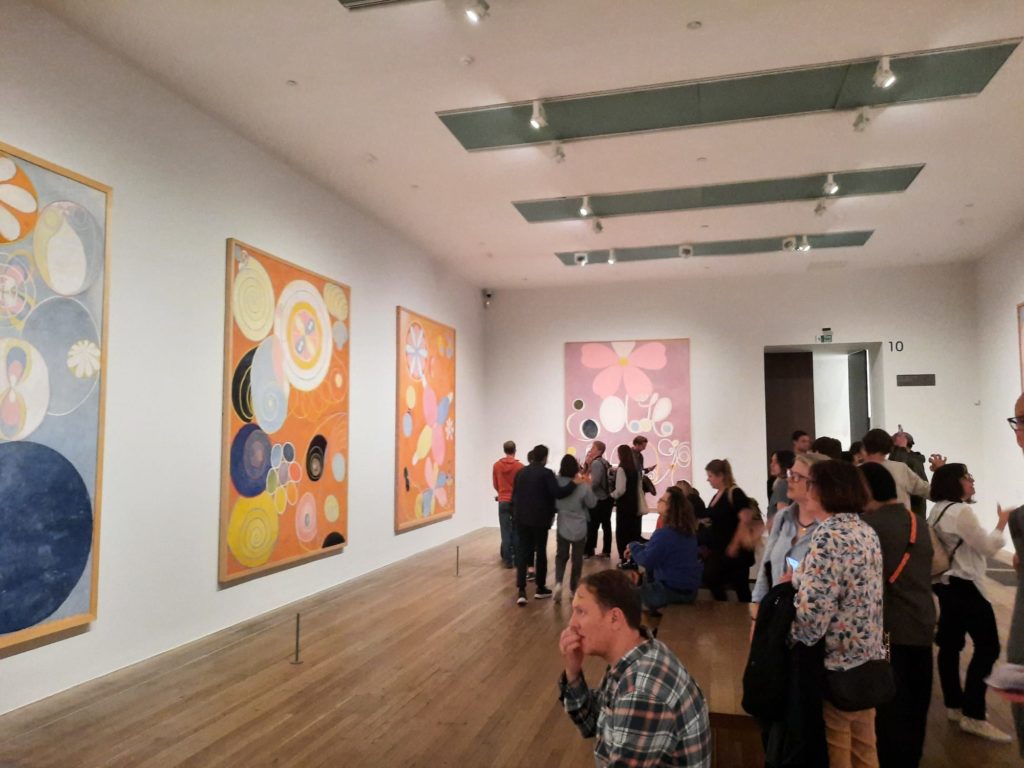

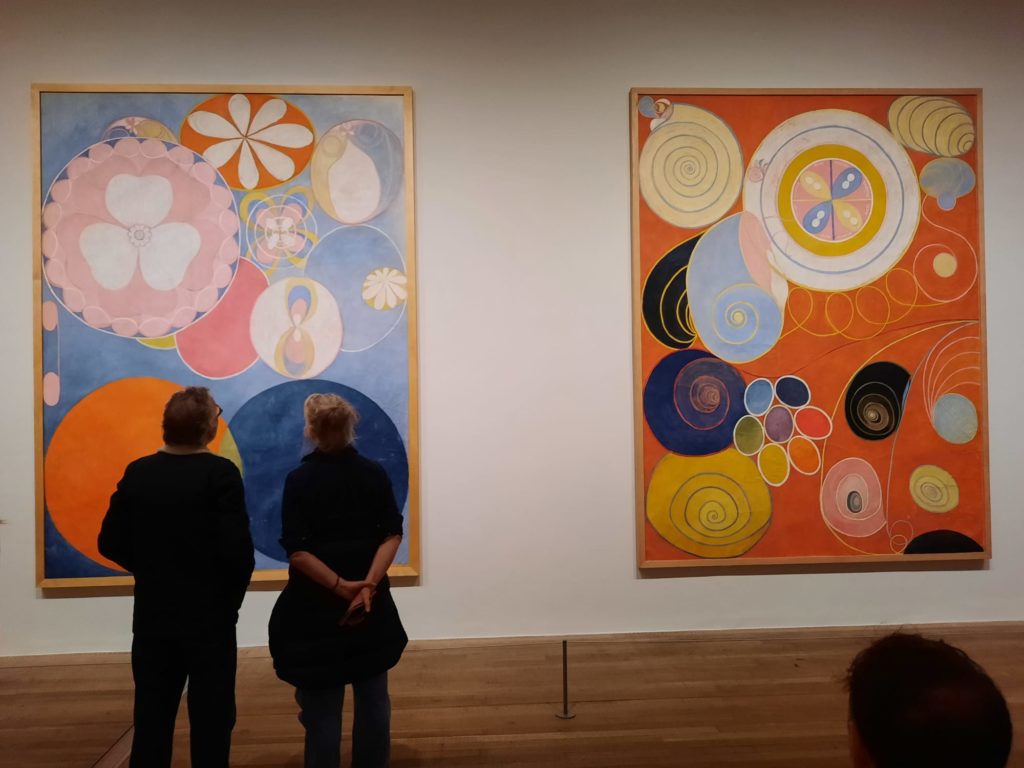
Final Thoughts On Hilma Af Klint & Piet Mondrian: Forms Of Life
So in the end, for me, this is a slightly peculiar exhibition. A juxtaposition of two artists who share some similarities, with an attempt to squeeze more out of them. It doesn’t quite come off (in my opinion), but is nonetheless intriguing. And this was an exhibition I liked for a few reasons.
Firstly, it’s a good opportunity to see works by both. Af Klint’s posthumous star has been on the rise for a while, but unless you were lucky enough to see the smash hit Guggenheim exhibition, this is one of the best chances to see a lot of her work in one place. Likewise with Mondrian, actually. Most big modern art museums have a couple of his works. But extensive loans, particularly from Kunstmuseum Den Haag, show different sides. I actually liked seeing his early experimental (and less good) Symbolist works alongside the mature, confident canvases. In the case of both artists, I have a better understanding of their life and work.
A final note on an unusual experiment in exhibition design. The curators of Hilma af Klint & Piet Mondrian: Forms of Life make use of a slightly awkward central gallery in order to create a space they call ‘The Ether’. Coded differently than the other rooms (eg. different wall colour), this is a take on the ‘etheric plane’ in Theosophy, a connection point to higher planes of being and a space for interconnection. Within the exhibition, The Ether contains most of the background content about Theosophical beliefs and practices, and sources for some of af Klint and Mondrian’s inspiration.
For me The Ether summarises the exhibition in a couple of ways. Firstly, despite being all about connection, the information presented here doesn’t quite feel organic. The links between Mondrian and af Klint still feel very tenuous. And secondly, af Klint feels much more at home in The Ether than Mondrian. Perhaps why she comes off the stronger of the two, Mondrian having been retrofitted into her world rather than the other way around.
Salterton Arts Review’s rating: 3.5/5
Hilma af Klint & Piet Mondrian: Forms of Life on until 3 September 2023
Trending
If you see this after your page is loaded completely, leafletJS files are missing.

